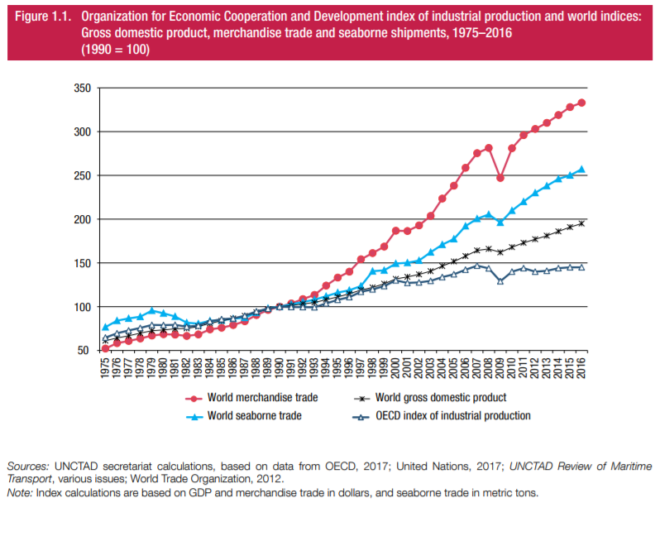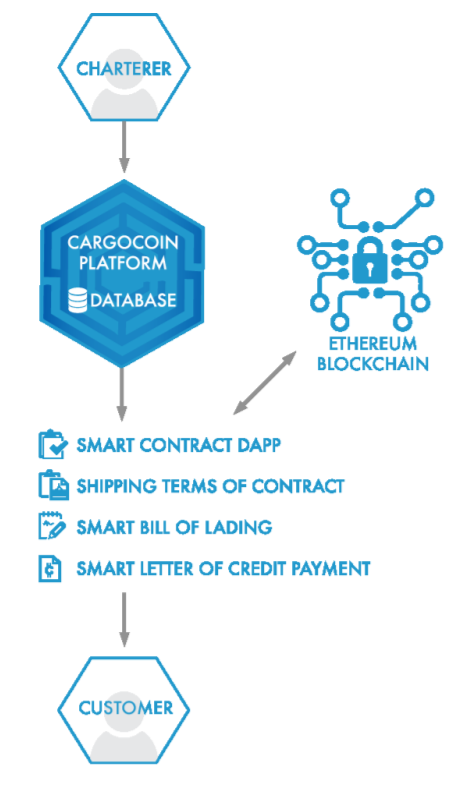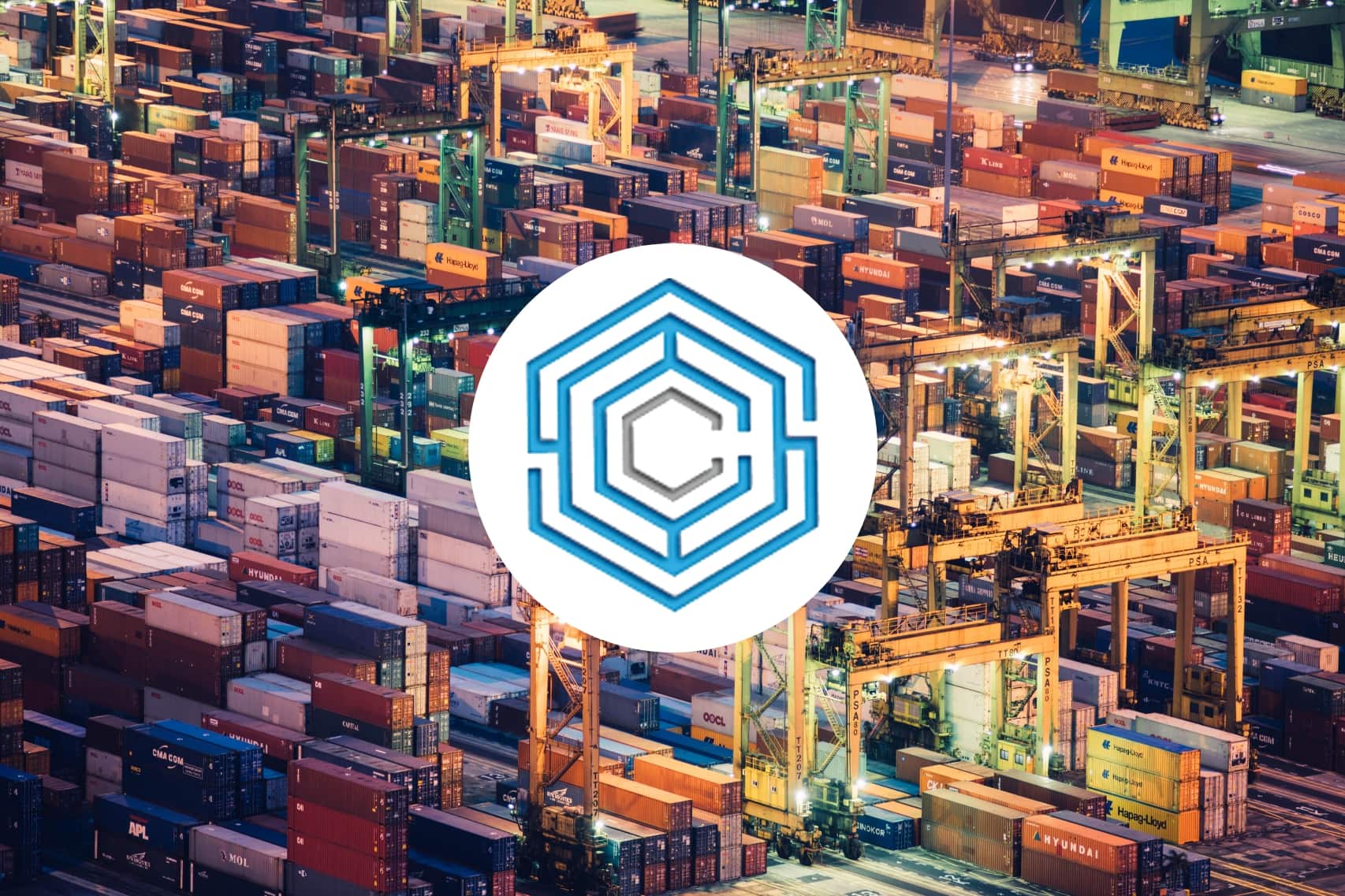The exchange of goods has never been more convenient than it is today, and it’s only getting better from here. Forgot to grab dish soap on your last trip to the supermarket? You can schedule a same-day delivery and have your dishes clean by dinner time. Amazon is already rolling out a drone delivery service that’ll speed up your deliveries even more.
New technologies like drones and blockchains are all the rage, which makes it easy to overlook the foundation of global logistics. Cargo ships have gotten massive in the last couple decades, some towering over 200 feet, while spanning almost a quarter-mile in length.
Ships of this size are navigating oceans constantly, and cost hundreds of thousands of dollars just to fuel. Numbers like this are largely irrelevant to the daily lives of retail consumers, but with the introduction of blockchain technology, it might be worth an extra look if you’re a retail investor.
CargoCoin is in the beginning stages of building a platform that links international trade with the blockchain. To understand their proposed solutions, first we must understand what international trade has become, the problems it currently faces, and how blockchains could help.
What Are Global Logistics?
Self-explanatory to some, international logistics are responsible for the flow of physical goods around the entire world. Cargo ships, planes, trains, and trucks allow for convenience that would be unfathomable to a vast majority of our ancestors.
The origins of global logistics can be traced all the way back to the domestication of the camel and the invention of the ship, which eventually allowed for the creation of the legendary Silk Road, and the subsequent development of trade routes between Asia, Africa, and Europe.
The Global Market
Take a brief moment to consider all the things our lives are filled with. Spoons, chairs, headphones, stuffed animals – the list goes on. Every physical item that is manufactured for trade needs to be delivered.
There are currently 4 main methods for delivering goods all over the world: ships, planes, trains, and trucks. Since the import and export of goods happens globally, more than 1 method of delivery is used within a majority of supply chains.
To begin getting a grasp of the sheer size of this “machine,” consider the seaborne trade stats compiled in the CargoCoin whitepaper.
The World Trade Organization (WTO) estimated the total value of global merchandise exports to be $15.46 trillion in 2016. The International Maritime Organization (IMO) estimates that ships transport 90% of global trade, and that there were 50,000 merchant ships sailing internationally.
According to the 2016 Maritime Transport Report by the United Nations Conference on Trade and Development (UNCTAD), in 2016 there were:
- 10.3 billion tons of world seaborne trade
- $380 billion in freight rates within the global economy
- Indicatications of steady, long-term growth
In the 2017 Maritime Transport Report, seaborne trade data from the 1980s and beyond was compiled and charted, and the results show a steady increase in the amount of cargo being loaded and shipped all over the world.

The chart above also shows correlative increases between the global gross domestic product, and the world merchandise trade. While correlation doesn’t equal causation, the uniformity of the chart certainly says something.
The $1,500 Chicken Sandwich
In a 6-month-long experiment, Andy George from the YouTube series “How to Make Everything” set out to make himself a sandwich without relying on free trade.
The journey included growing his own vegetable garden, flying to the coast to make salt from sea water, collecting honey with a beekeeper, manufacturing flour by hand, and killing a chicken with his bare hands. The adventure cost him $1,500 even after relying on multiple forms of transportation—that likely wouldn’t exist without free trade.
We might not be able to conclude with 100% certainty whether free trade is good for all parties involved, but it does seem to benefit the majority of those participating. It might just be that the current systems we have in place could use an update.
Global Logistic Growing Pains
As the CargoCoin whitepaper explains in detail, since the majority of globally traded merchandise will spend time seaborne, the problems within the industry can be best summarized by analyzing maritime issues. Many of the issues present in seaborne trade continue when products are transferred from boat to planes, trucks, and trains.
High Fees and Human Delays
A majority of the problems within worldwide trade have a similar source: the process still relies on paperwork moving between human hands across borders. Old-fashioned paper documents like a Bill of Lading, Letter of Credit, CMR, and Airway Bills all need to be handled by professionals, then mailed all over the world to act as proof of ownership.
Within the current system, fees accrue not only from the physical transfer of documents, but with every step of the supply chain. Costs start to add up when banks, couriers, insurers, brokers, and agents are all looking for a cut. Not only that, many of these offices are only open certain hours, and operate out of different time zones.
The general inefficiency of the system leads to, for example, idling ships. While the paperwork is being taken care of, sometimes cargo ships are forced to idle for hours, or even days. According to the CargoCoin OnePager, 25% of the average ship’s life is spent idling, and depending on the size of the ship, each idling day costs anywhere between $10,000 and $150,000.
Fraud and Lack of Trust
Since most of the documentation involved in the trade business requires paper products, and tech appliances are getting better and less expensive, fraud rates have been on the rise. With modern day technology, it’s recently become easier to target businesses who operate with insecure, outdated, paper-based methods.
According to the 2014 Global Economic Crime Survey, fraud within the logistics and transport markets is up 34%, and has been steadily increasing for years. Since each actor in the supply chain is required to have access to ownership documents, the potential for fraud to occur is constant.
While fraud rates aren’t the sole cause for a lack of trust in the industry, they do aggravate existing issues that are prevalent across all business types. Forging trusted partnerships is difficult domestically, and international business presents a unique set of unknowns to navigate.
This general lack of trust typically leads to businesses relying on recommendations from within their circles, which acts as a bottleneck for industries at large. After reviewing the problems within the current seaborne trade industry, it’s fairly easy to see how blockchain technology could make it even better.
How CargoCoin Streamlines Global Trade
To begin, take a look at the diagrams below. The first is CargoCoin’s representation of our current system, and the second displays their proposed solution. This simplification resembles many of the solutions proposed in blockchain startup whitepapers.


The gold within blockchain technology is the ability to have a non-reproducible piece of digital content. The allows for immutable ledgers to be accessed instantly from all over the globe.
Minimizing Costs and Delays
Lowering Costs – It’s worth noting right away that CargoCoin services are free, encouraging a worldwide marketplace for free trade and transport. This is a massive step forward compared to all the fees charged throughout the process by every member of the supply chain.
Minimizing Delays – Not only does it cost less to transfer funds and information using CargoCoin, it’s also much faster. Instant exchange is now possible, which leads to instant approval of documents between all participants through smart contracts.
UNCTAD estimates that payment delays cost roughly $19 billion per year. Since the CargoCoin platform consists of a system of smart contracts in perpetual operation, delays caused by work schedules and timezone mismatches are heavily reduced.
You can learn more about their smart contract ecosystem by reading Section 3.3 of the whitepaper.
An Immutable World Trade Record
CargoCoin will operate on top of the Ethereum blockchain using an ERC-223 token standard.
According to the CargoCoin whitepaper:
The ERC 233 allows for more advanced, precise and universal handling of smart contracts required for the project, while avoiding potential token traps. The issued tokens are designed to fully act as smart contracts programmed in Solidity and available as open source.
Reducing Fraud – Through the use of smart contracts, payments aren’t released until each actor’s conditions are met, and proof is provided publically. By use of the blockchain, fraudulent duplication of ownership is eliminated.
Increasing Trust – Trust is refocused from each individual actor to Ethereum’s reputation as a whole. A public, proven track record can be accessed from anywhere in the world.
Securing Information – Sensitive information leakage is eliminated by the blockchain’s hashing algorithms. The information is stored in a decentralized database, making it virtually impossible to hack into. Destruction of physical records is no longer an issue, and reviewing archived information is easier than ever before.
The CargoCoin Platform Launch
CargoCoin is in the midst of their ICO event, which is scheduled to end October 31, 2018. They’ve already reached their soft cap of $5 million, with a set hard cap of $55 million. To participate, click here. They’re also sponsoring a bounty program, which you can sign up for by clicking here.
As with all ICOs and crypto projects, your due diligence is highly recommended. Learn more about CargoCoin by reading their whitepaper, checking out their website and assessing their team of industry professionals.
Stay up to date on their progress by following their Medium blog, joining their Telegram group, and reviewing the activity on their Github page.

